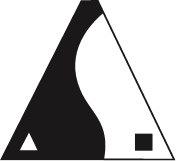So I started painting again.
Just cracked the seal on that part of myself that used to flow so easily—before life got so full, so layered, so external.
And in almost perfect parallel, I began a new strength training protocol: upper body–focused, three to four times a week, 30 to 40 minutes each session. I’ve set a goal for myself—to pike up into a handstand and hold a solid forearm balance by the end of the year.
And I’m putting in the work. I do yoga five days a week. I train two days a week. I do this targeted upper-body protocol about four days a week. It’s not about burnout—it’s about reclaiming. And what’s been most surprising isn’t what I’m building, but what I’m finally seeing.
Last week, for the first time in maybe ten years, I filmed myself practicing yoga—from the side. And it stopped me in my tracks.
What I saw wasn’t just a posture issue—it was a pattern. My chest curled in, my chin tucked, my shoulders collapsed like I was bracing against something. I’ve always seen myself head-on in the mirror.
But this side profile told the truth: I’ve been folding inward for years.
Part of that collapse started when I was 17, after a breast reduction—something I chose both for physical relief and to escape the kind of attention that didn’t feel safe. After that surgery, I started rounding forward, physically and emotionally. I tucked my chest, I lowered my chin, I pulled my energy back into myself.
What I thought was protection became a pattern of shrinking—of trying not to be “too much.”
That posture became ingrained. And despite how much I’ve trained, strengthened, stretched, evolved… I still carry it.
But there’s another layer here too. For years in my yoga practice, I’ve been working on correcting my natural tendency toward lordosis—a pronounced sway in the lower back, which causes the pelvis to tilt forward.
In trying to avoid dumping into my low back, I’ve been cued to draw my ribs in, pull my low belly back, and resist the gymnast-style posture of throwing the shoulders back and the chin up.
|



